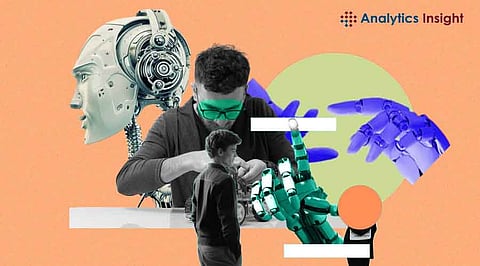From Cobots to AI: The Top Robotics Trends of 2025
Robotics continues to evolve at an unprecedented pace, redefining the boundaries of automation and technology. From integrating artificial intelligence to creating robots capable of performing complex tasks, the future of robotics is brimming with innovation. This article highlights the top robotics trends expected to dominate in 2025, highlighting how AI in robotics and autonomous systems trends shape industries.
Agentic AI Integration
Agentic AI allows robots to make independent decisions and take action to achieve goals. This innovation boosts productivity in logistics, healthcare, and manufacturing sectors. Robots equipped with agentic AI are now increasingly capable of performing tasks without human intervention. Their ability to adapt in real time ensures efficiency in ever-changing environments, heralding a new era in robotics innovation.
Rise of Polyfunctional Robots
Polyfunctional robots are designed to perform multiple tasks, adapting seamlessly to human instructions. These robots can switch roles in dynamic environments like assembly lines or hospital wards. Their versatility makes them indispensable in collaborative settings, enhancing efficiency and fostering smooth human-robot partnerships. This trend underlines the importance of flexible, adaptable robotic systems in shaping the future of robotics.
Collaborative Robots (Cobots) on the Rise
Cobots are increasingly popular for their ability to work safely alongside humans. They are particularly useful for repetitive or strenuous tasks, reducing physical strain on workers. Their ease of use and adaptability make them vital in manufacturing, agriculture, and other industries facing labor shortages. With intuitive designs and advanced safety features, cobots exemplify the seamless integration of humans and machines in autonomous systems.
AI-Driven Automation
The integration of AI in robotics is revolutionizing automation. Robots can now analyze real-time data, predict maintenance needs, and optimize production lines. These advancements minimize downtime and improve quality control. AI-driven robots also enhance decision-making in complex systems, making processes more efficient and reliable. This trend represents the synergy between cutting-edge AI and robotics innovation.
Expansion into Non-Traditional Sectors
Robots are no longer limited to traditional sectors like manufacturing. Expanding into areas such as agriculture, construction, and food processing demonstrates the broadening scope of robotics. In agriculture, robots assist with planting, harvesting, and monitoring crops. In construction, they perform tasks like bricklaying and welding. These applications tackle labor challenges and boost productivity, illustrating how robotics trends reshape diverse industries.
Advancements in Human-Robot Interaction
Improving human-robot interaction is critical as robots become integral to daily life. Advancements focus on intuitive communication methods, such as natural language processing and gesture recognition. These improvements make robots easier to use, fostering better collaboration between humans and machines. Enhanced interaction capabilities also expand the usability of robots in sectors like healthcare and customer service, ensuring their role in the future of robotics.
Emerging Technologies in Robotics
New technologies in the three dimensions - perception, control, and decisionmaking - are disrupting the boundaries of robotic capabilities. Autonomous mobile robots, whose main job is to move independently and optimize work, more often appear in the warehouse. These technologies effectively increase the accuracy of the data and minimize the chance of mistakes. With such an integration, robotics innovation continues to embrace superior system automation.
Demand for Skilled Labour
With robotics developing, qualified workers are needed to program, operate, and maintain sophisticated models. Corporate learning landscapes are shifting to prepare employees for the future of robotics. Organizations also have to commit their resources to training employees to enhance the outcome of adopting robotic solutions. This is important for maintaining growth in autonomous systems due to the realization of a skills gap.
Conclusion
Robotics of the future can be described by intelligence, adaptability, and collaboration. The latest advances, such as agentic AI, polyfunctional robots, and cobots, drive organizations’ efficiency and development. As the application of AI in robotics unfolds year after year, innovative improvements in human-robot interfaces and other new technologies ensure the reality of robotics innovation. Such innovations prepare the robotics industry to fix labor gaps, increase efficiency, and prepare society for a future filled with smarter technologies.
.png)

